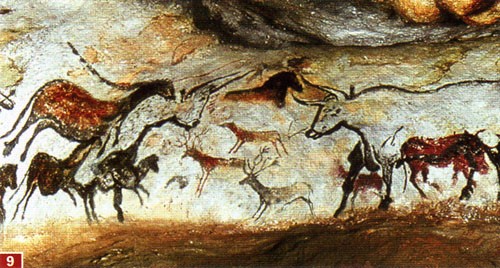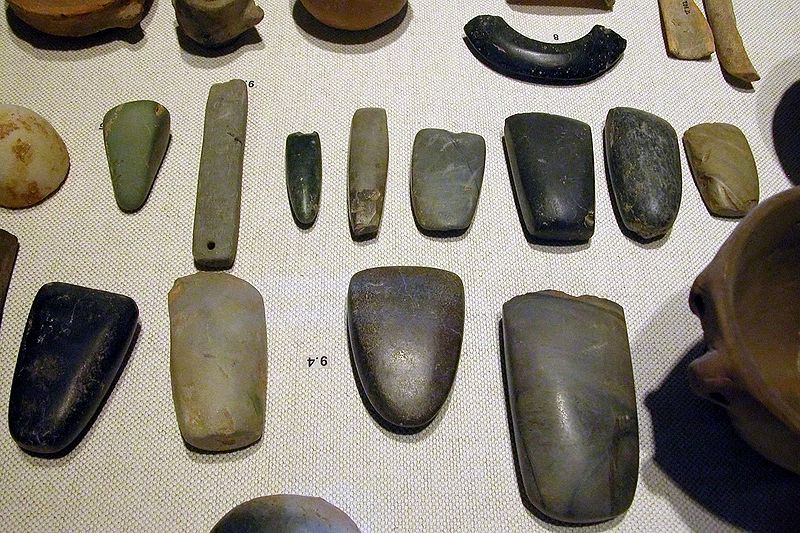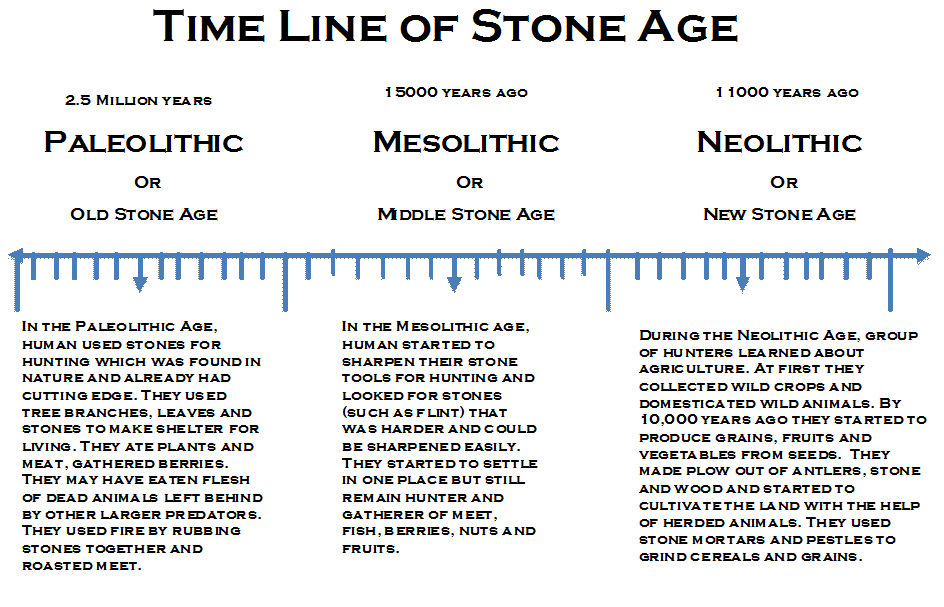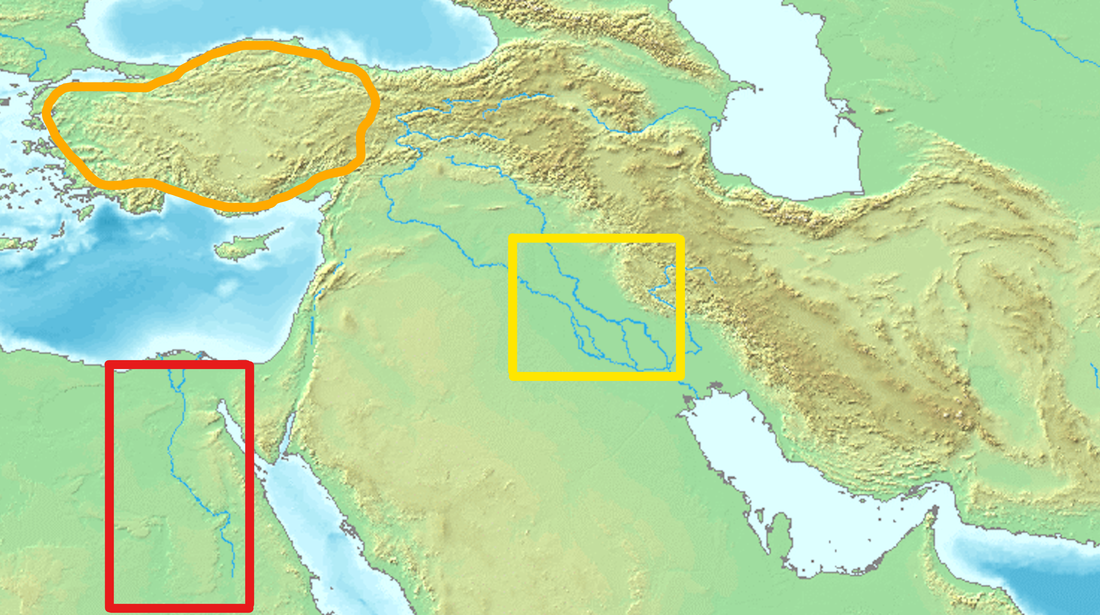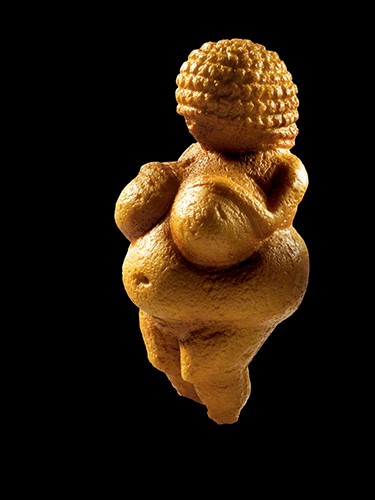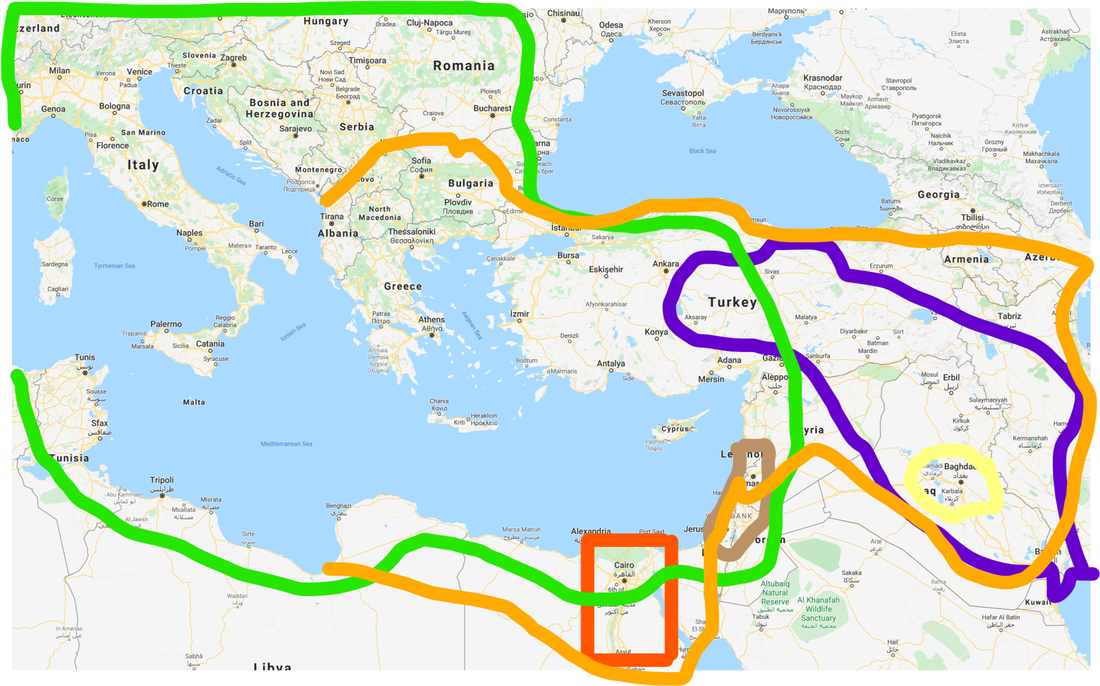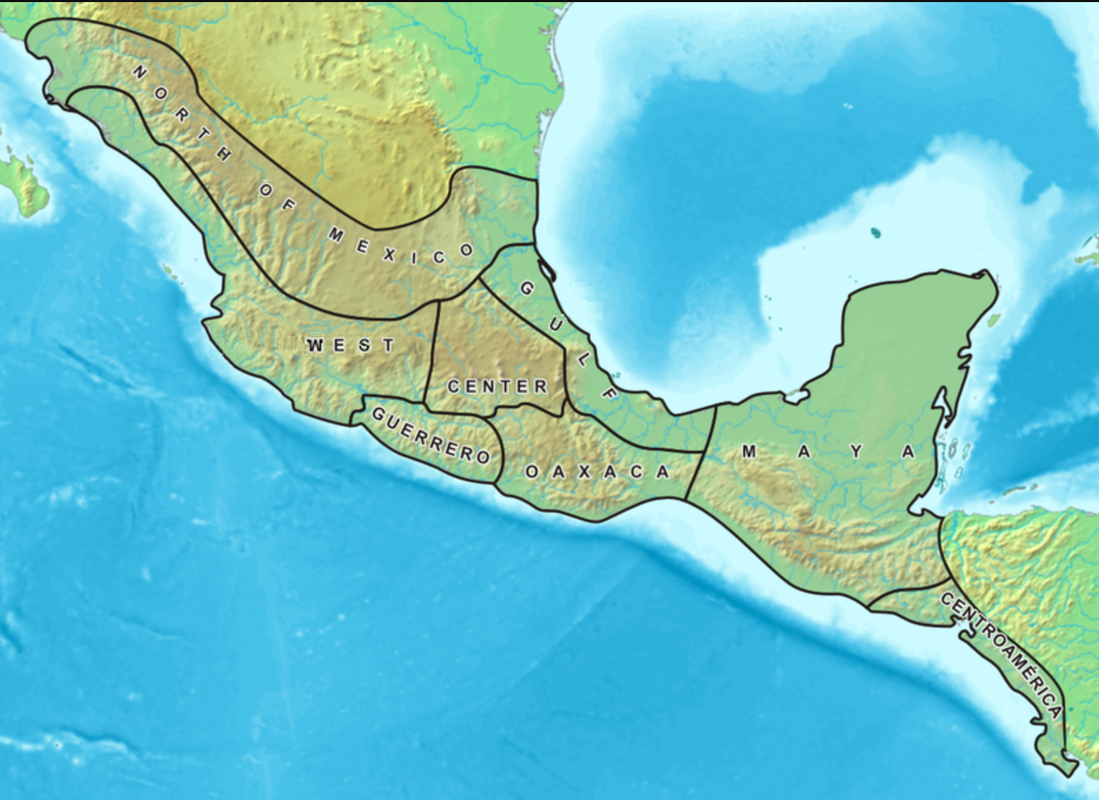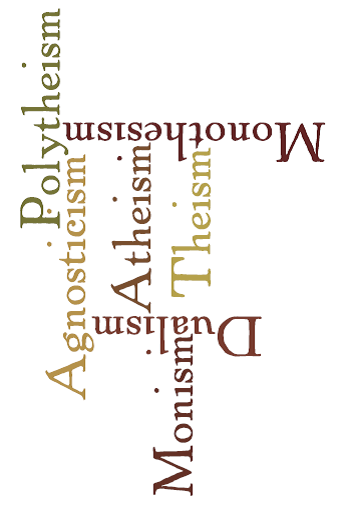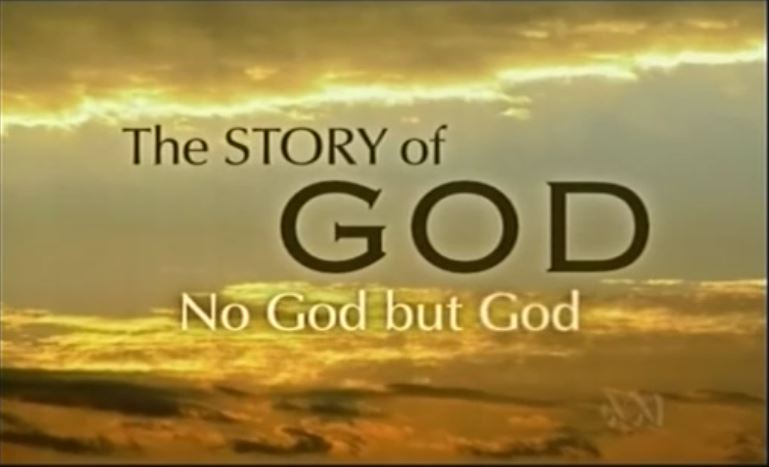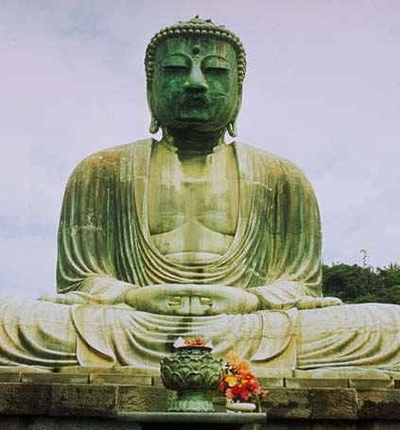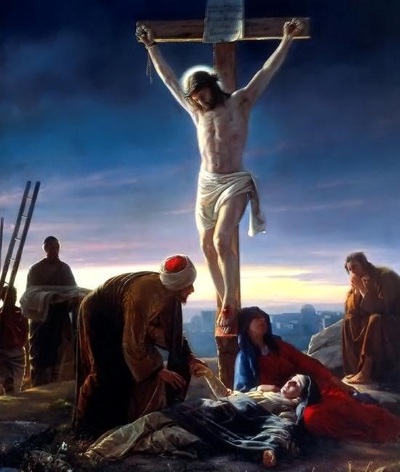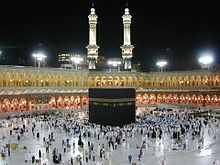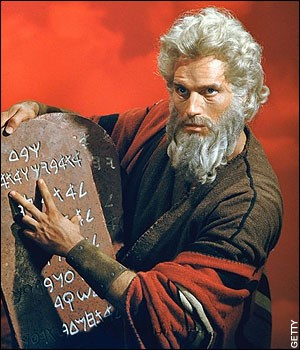Religion in the Ancient World
What is considered "ancient" is a matter of conjecture when it comes to religious thoughts and ideas? In some ways in religious thinking everything old is new again. The key questions that humans seek to resolve have never become redundant. What is the cause and reason for all of creation? What is the purpose of life, the universe and everything? What is the proper relationship between humans and the rest of the natural world? How should one treat one's tribe or family and those who are not of our group? While these questions have never left the human stage and are central to the existence of religious faith, there is a sense in which the answers proposed have have emerged as part of the evolution of the humankind. Also there is evidence that ancient answers continue to inspire and be adapted by believers in later times.
Historians can speak of pre-history of religion existing in early homo sapiens, but the cultures that emerge in the late neolithic, bronze and iron ages have stronger examples of the aspects of religion that can be recognised in today's religious world.
Historians can speak of pre-history of religion existing in early homo sapiens, but the cultures that emerge in the late neolithic, bronze and iron ages have stronger examples of the aspects of religion that can be recognised in today's religious world.
|
Origins
The prehistory of religion relates to a study of religious beliefs that existed prior to the advent of written records. Prehistory refers to archaeological explanations of what happened in human societies according to the traces left by intentional human activity. The history of religion refers to the written record of human religious experiences and ideas. This period of religious history begins with the invention of writing about 5,000 years ago (3000 BCE) in the Near East. Essentially, it is what happened in the world before the invention of writing in Sumer, China and Meso-America. Palaeolithic & Mesolithic The earliest evidence of religious ideas dates back several hundred thousand years to the Middle and Lower Palaeolithic periods. Archaeologists refer to apparent intentional burials of early homo sapiens from as early as 300,000 years ago as evidence of religious ideas. Other evidence of religious ideas include symbolic artefacts from Middle Stone Age sites in Africa. However, the interpretation of early Palaeolithic artefacts, with regard to how they relate to religious ideas, remains controversial. Archaeological evidence from more recent periods is less controversial. A number of artefacts from the Upper Palaeolithic or Mesolothic Period (50,000-13,000) are generally interpreted by scientists as representing religious ideas. Examples of Upper Palaeolithic or Mesolithic remains associated with religious beliefs include the lion man, the Venus figurines, cave paintings from Chauvet Cave and the elaborate ritual burial from Sungir.
|
For your GLOSSARY
| ||||||
Neolithic religions
|
For Your GLOSSARY
figurines deity empire GEOGRAPHY Near East Turkey (Anatolia) Egypt Mesopotamia (Sumer) |
Nature of Religion in the Ancient Civilisations
|
For your GLOSSARY theocracies enmity monotheism polytheism atheism agnosticism dualism platonism GEOGRAPHY Babylon Egypt Canaan Rome Greece Persia Meso-America |
From the Axial Age to Modern Times
| Notetaking Exercise (docx) | |
| File Size: | 12 kb |
| File Type: | docx |
|
Axial age
The period from 900 to 200 BCE has been described by historians as the axial age, a term coined by German philosopher Karl Jaspers. According to Jaspers, this is the era of history when "the spiritual foundations of humanity were laid simultaneously and independently... And these are the foundations upon which humanity still subsists today". Intellectual historian Peter Watson has summarized this period as the foundation of many of humanity's most influential philosophical traditions, including monotheism in Persia and Canaan, Platonism in Greece, Buddhism, Jainism and Hinduism in India, and Confucianism and Taoism in China. These ideas would become institutionalized in time, for example Ashoka's role in the spread of Buddhism, or the role of platonic philosophy in Christianity at its foundation. |
Middle Ages
Newer present-day world religions established themselves throughout Eurasia during the Middle Ages by: Christianisation of the Western world; Buddhist missions to East Asia; the decline of Buddhism in the Indian subcontinent; and the spread of Islam throughout the Middle East, Central Asia, North Africa and parts of Europe and India. During the Middle Ages, Muslims were in conflict with Zoroastrians during the Islamic conquest of Persia; Christians were in conflict with Muslims during the Byzantine-Arab Wars, Christians were in conflict with Muslims during the Crusades, Reconquista and Inquisition; Shamans were in conflict with Buddhists, Taoists, Muslims and Christians during the Mongol invasions; and Muslims were in conflict with Hindus and Sikhs during Muslim conquest in the Indian subcontinent. Many medieval religious movements emphasized mysticism, such as the Cathars movement in Christianity, the Kabbalah movement among the Jews of Northern Spain, the Bhakti movement in Hinduism in India and Sufism in Islam. Monotheism reached definite forms in medieval Christology and in Islamic Tawhid. Hindu monotheist notions of Brahman likewise reached their classical form with the teaching of Adi Shankaracharya |
Modern Period
European colonisation during the 15th to 19th centuries resulted in the spread of Christianity to Sub-Saharan Africa, the Americas, Australia and the Philippines. The invention of the printing press in the 15th century played a major role in the rapid spread of the Protestant Reformation under leaders such as Martin Luther and John Calvin. Wars of religion followed, culminating in the Thirty Years War which ravaged central Europe, 1618-1648. Both Protestant and Catholic churches competed in a global endeavor to Christianize the world. The 18th century saw the beginning of secularisation in Europe, gaining momentum after the French Revolution. By the late 20th century religion had declined to only a weak force in most of Europe. In the 20th century, the regimes of Communist Eastern Europe and Communist China were explicitly anti-religious. A great variety of new religious movements originated in the 20th century, many proposing syncretism of elements of established religions. However, adherence to such new movements is limited. Today scholars estimate that there are around 4200 active religions in the world. Adherents of the classical world religions account for more than 75% of the world's population. Atheism is the absence of religious belief, and it’s a growing trend in many countries, particularly in Europe. Religious experts are estimating that there are somewhere between 500 to 750 million atheists in the world. As of 2019, an estimated 16% of the world's population identifies as unaffiliated . |
|
Click here for the Story of Monotheism
It is in clickview - interactive |
